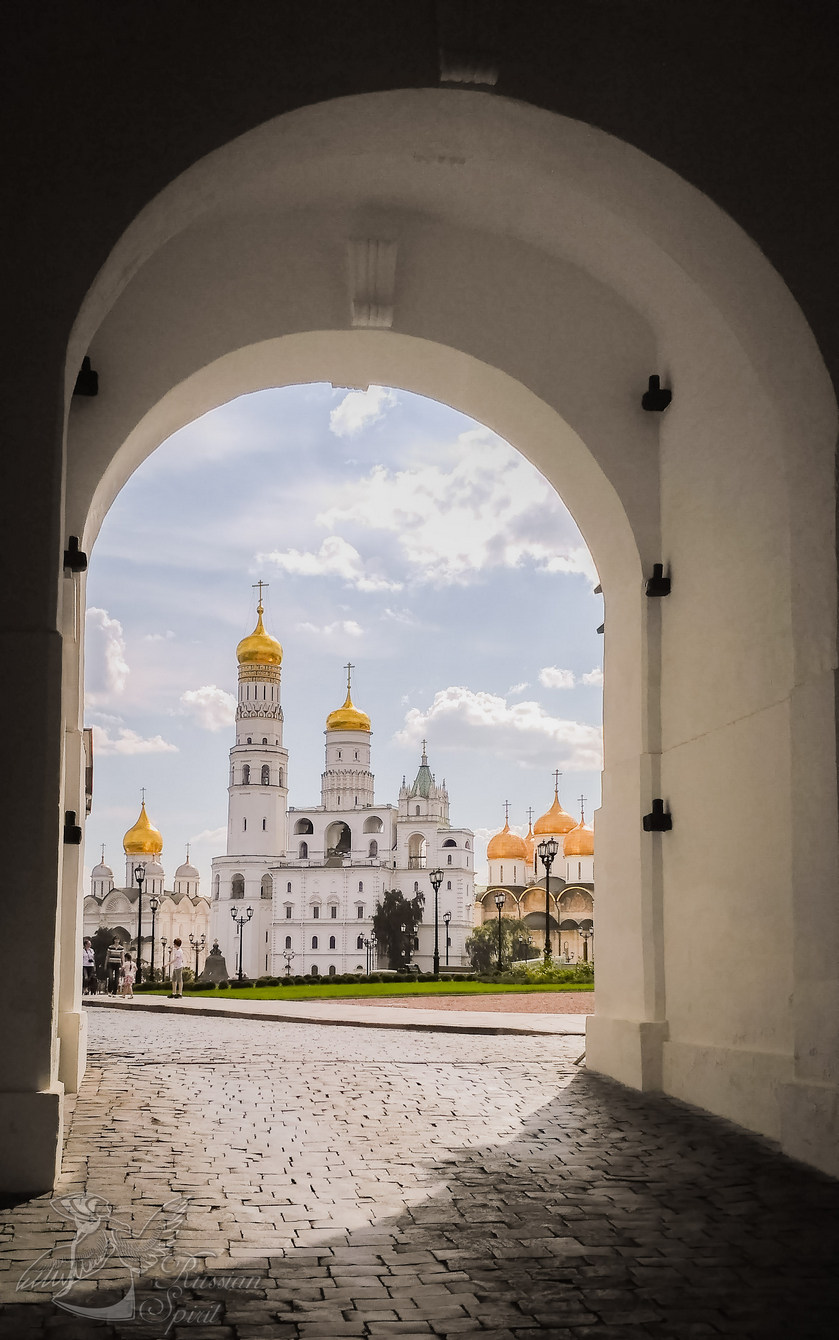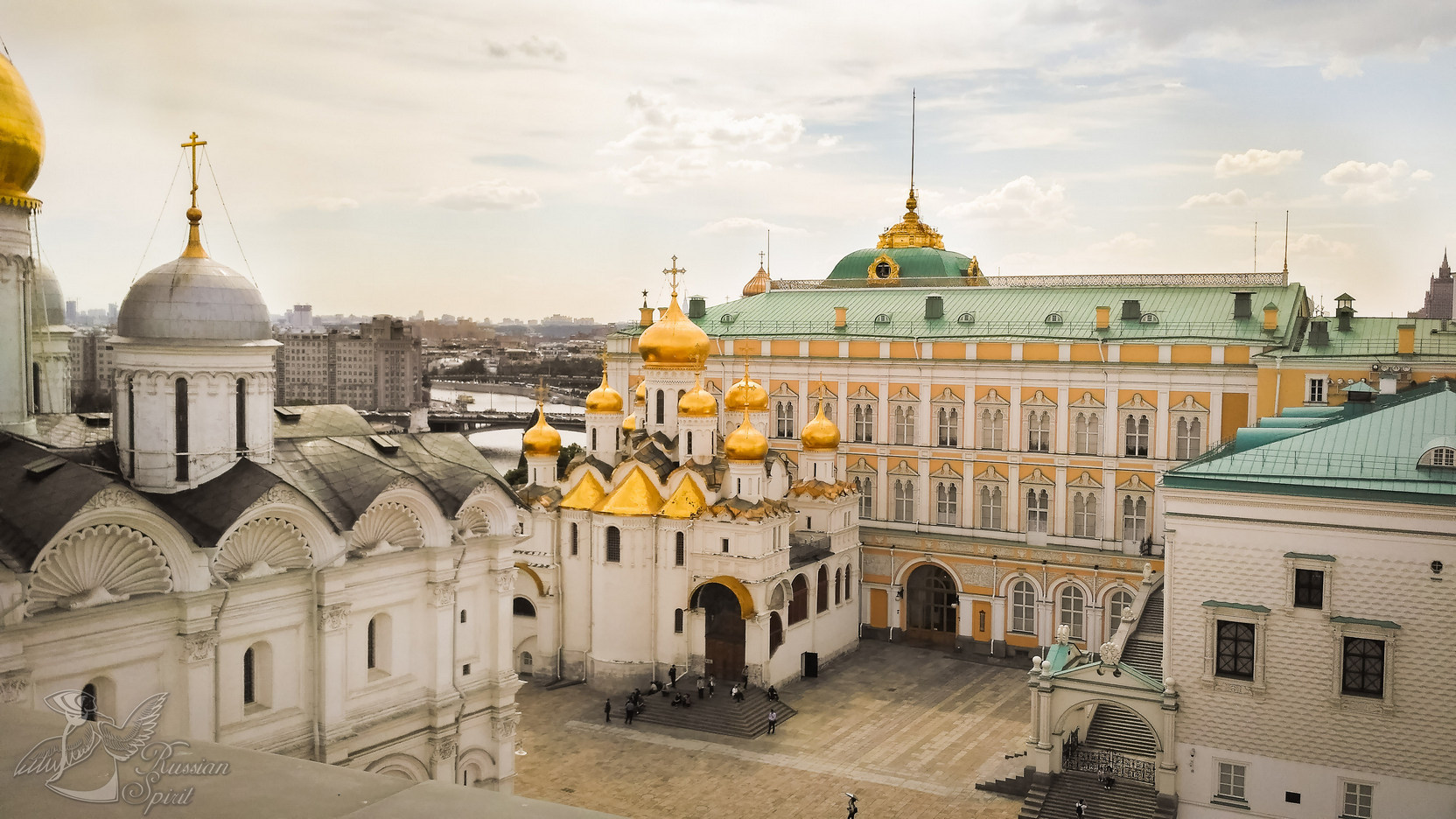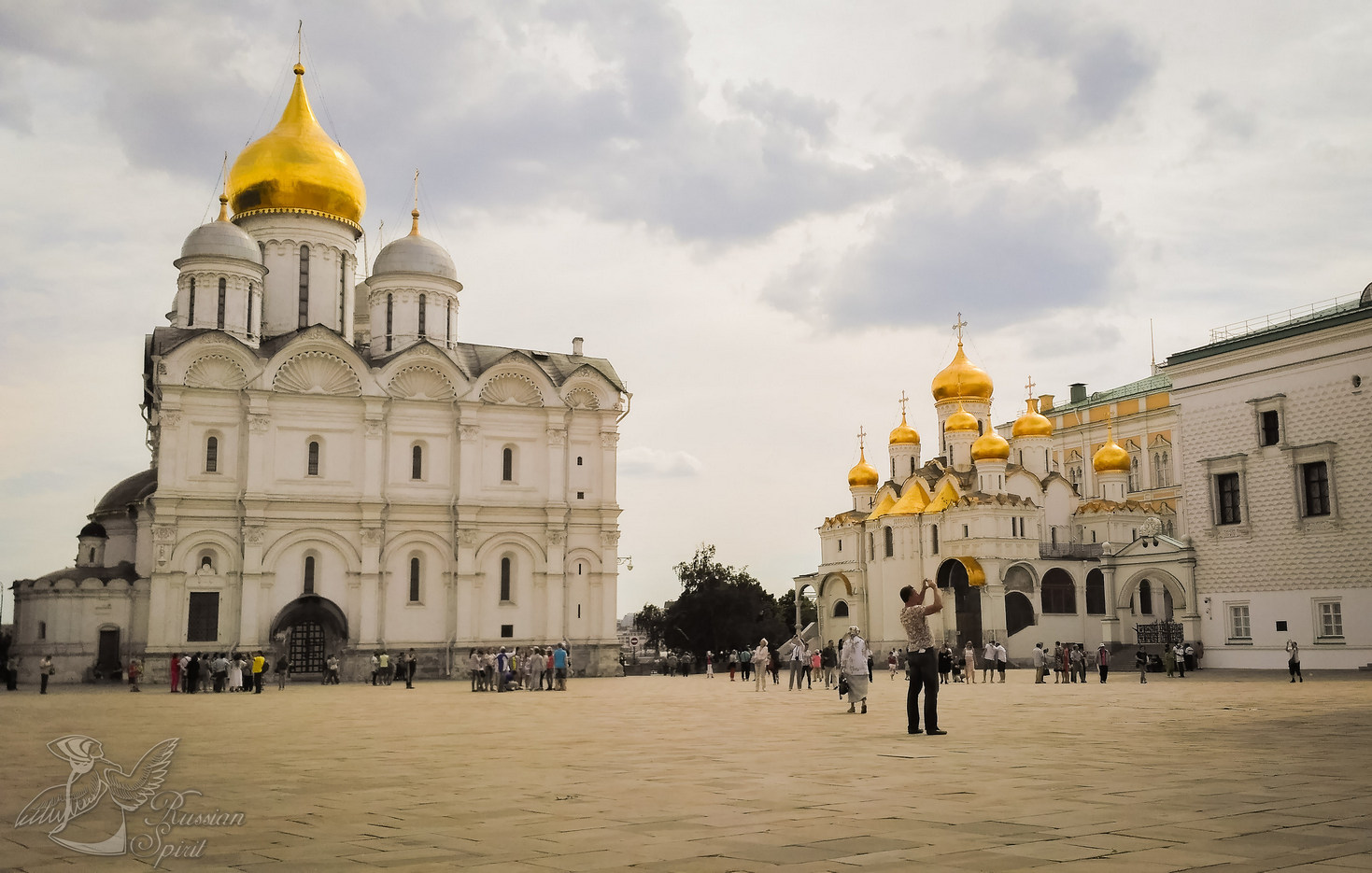In the very center of Moscow, on the hill under Moscow river is located the main historical and political complex of Russia - Moscow Kremlin. The history of Moscow is reflected in each building here. These are ancient canons and bells, cathedrals and palaces, museums and the residence of the president of Russia. The high walls and the loopholes remind us the time when it was a powerful impregnable fortress.

The architectural complex of the Kremlin includes the fortress with its vigorous walls and towers, as well as the ensembles of the squares – Sobornaya and Ivanovskaya Square, Senatskaya, Dvortsovaya, Troitskaya and streets – Spasskaya, Borovitskaya and Dvortsovaya.
Some facts from history
The first mention about Moscow dates from 1147. In 1156 the first wooden walls of the Kremlin were built on the Moscow river side. The old Russia represented that time separated princedoms and couldn’t resist Mongol invasion in 1238. Moscow was destroyed and the Kremlin burnt out.

The tsar Ivan Kalita consolidated the Moscow princedom and the Kremlin was reconstructed. To avoid the frequent fires the grandson of Ivan Kalita Dimitry Donskoy decided to rebuilt the walls and the towers from white stone. So from 1367 Moscow is called white stone Moscow.
 Kremlin was extended during the reign of the tsar Ivan III and many new cathedrals and palaces as well as Ivan the Great bell tower appeared. The buildings became more and more beautiful during the period of prosperity in 17th century but when the capital of Russia moved to Saint-Petersburg it stayed rather deserted. Almost all the wooden buildings were burnt out and not reconstructed.
Kremlin was extended during the reign of the tsar Ivan III and many new cathedrals and palaces as well as Ivan the Great bell tower appeared. The buildings became more and more beautiful during the period of prosperity in 17th century but when the capital of Russia moved to Saint-Petersburg it stayed rather deserted. Almost all the wooden buildings were burnt out and not reconstructed.
During the war 1812 Napoleon retreating decided to blast the Kremlin but it was saved thanks to courage of Muscovites. Soon all the ruined buildings were restored.

In 1917 the revolution was finished by Kremlin seizure. Here in 1918 the Soviet government moved from Petrograd. Unfortunately Stalin destroyed many ancient buildings inside the Kremlin.
In 1990 the Kremlin and Red Square complexes were included in the list of UNESCO as one of the greatest historical monuments of the planet.

The Kremlin walls have 20 towers, they are all different and each one has its name and its proper interesting history: Borovitskaya, Spasskaya, Blagovescenskaya, Tainitskaya …

The main decoration of Kremlin is Sobornaya Square – the kingdom of three ancient cathedrals and Bell Tower of Ivan the Great.
Uspensky cathedral was the place of coronation of the Russian emperors, election of head of the Russian Orthodox church and burial of metropolitans and patriarchs.
Blagoveschensky cathedral served as a personal church of the great princes and tsars of Moscow. The part of the icons is created by Andrey Rublev and Feofan Grek.
Archangelsky cathedral was a patrimonial burial vault for great princes and tsars. There are 47 gravestones and 2 shrines. The great Russian tsars Ivan Kalita, Ivan the Terrbile, Dimitry Donskoy, Mikhail and Alexey Romanovy are buried here.

Opening hours from 10:00 to 18:00;
Ticket office: from 9:00 to 17:00 in summer and from 9:30 to 16:30 in winter;
Free day: Thursday and festive days, check on the website
Website: http://www.kreml.ru
Metro station: Alexandrovsky sad
